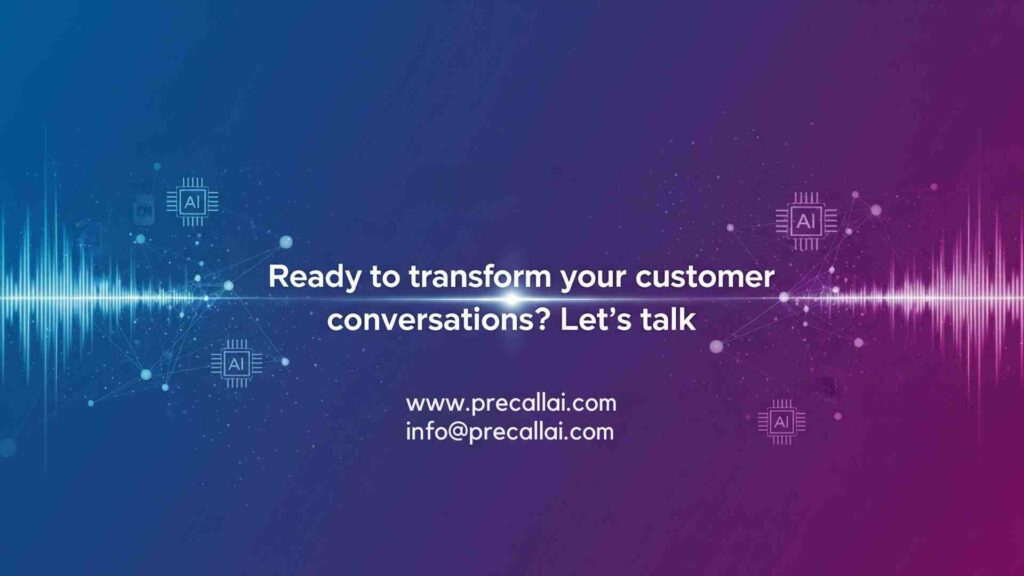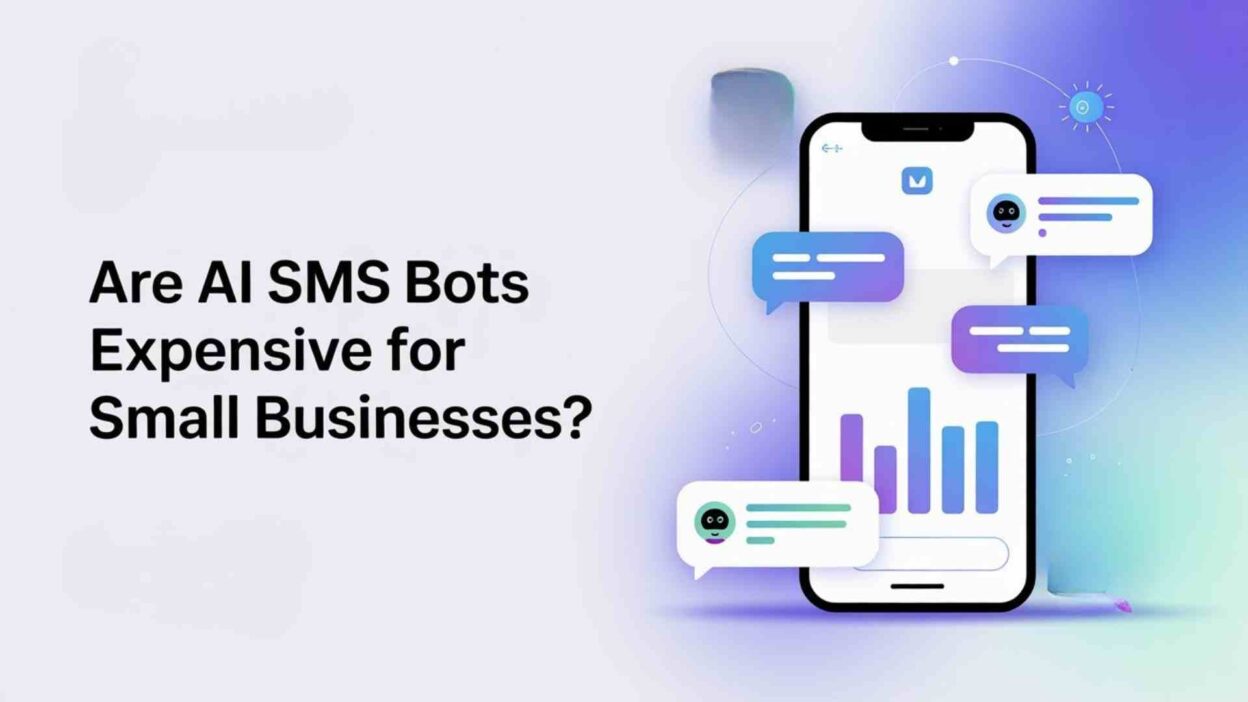TL;DR Small businesses constantly search for affordable ways to improve customer communication. Text messaging remains one of the most effective channels for reaching customers directly. People check their phones dozens of times daily. SMS open rates exceed 90% compared to email’s 20% average. The challenge lies in managing high volumes of text conversations without overwhelming a limited staff.
Table of Contents
Are AI SMS bots expensive to use for businesses operating on tight budgets? The answer depends on various factors, including business size, message volume, and feature requirements. Many small business owners assume automation technology carries prohibitive costs. This belief prevents them from exploring solutions that could actually save money.
Understanding the true costs helps businesses make informed decisions. Initial pricing appears straightforward, but hidden expenses can surprise unprepared buyers. Smart business owners calculate the total cost of ownership before committing to any platform. This analysis reveals whether SMS automation makes financial sense for their specific situation.
Understanding AI SMS Bot Pricing Models
SMS bot providers structure their pricing in different ways. Some charge flat monthly fees while others use usage-based billing. The pricing model significantly impacts affordability for small businesses with variable message volumes.
Subscription-based pricing offers predictable monthly costs. Businesses pay a set amount regardless of message volume within plan limits. This model suits companies with consistent messaging needs. Budget planning becomes simpler when costs remain stable month to month.
Pay-per-message pricing charges for each text sent or received. Light users benefit from this model since they only pay for actual usage. Growing businesses might exceed expectations and face unexpected bills. Volume discounts often apply at higher tiers to reduce per-message costs.
Monthly Subscription Costs
Entry-level plans typically start between $20 and $100 per month. These basic tiers include limited message volumes and essential features. Small businesses often find starter plans sufficient for initial automation needs.
Mid-tier plans range from $100 to $500 monthly. These packages include higher message allowances and advanced features. Businesses experiencing growth migrate to these plans as needs expand. The pricing remains accessible for profitable small businesses.
Enterprise plans exceed $500 per month with custom pricing. Large message volumes and specialized features justify these premium costs. Most small businesses never require enterprise-level capabilities. The lower tiers provide adequate functionality for typical small business applications.
Per-Message Pricing Structure
Message costs typically range from $0.01 to $0.05 per text. Incoming messages sometimes cost less than outgoing ones. Carriers charge different rates for domestic versus international delivery. MMS messages with images cost more than plain text SMS.
Are AI SMS bots expensive to use when calculating per-message costs? A business sending 1,000 messages monthly at $0.02 each pays only $20. This represents a minimal investment for customer engagement. The cost becomes negligible compared to hiring additional staff for manual messaging.
Volume discounts reduce per-unit costs for high-volume senders. A company sending 50,000 messages might pay $0.005 per text. Bulk pricing makes SMS automation extremely cost-effective at scale. Small businesses approaching these volumes achieve significant savings through automation.
Setup and Implementation Fees
Some providers charge one-time setup fees for new accounts. These costs cover initial configuration and technical integration. Setup fees range from zero to several hundred dollars, depending on complexity.
Many modern platforms eliminate setup fees. Competition among providers benefits small businesses seeking affordable entry. Free trials let businesses test functionality before a financial commitment. This risk-free evaluation period proves valuable for cautious buyers.
Custom integrations with existing business systems may incur additional costs. API development requires technical expertise and time. Businesses with unique requirements should budget for professional implementation services. Standard integrations typically include no extra charges beyond monthly fees.
Breaking Down Total Cost of Ownership
Subscription fees represent only one component of true SMS bot costs. Small businesses must consider all expenses associated with implementation and operation. Hidden costs can transform apparently affordable solutions into budget-busting commitments.
Training costs vary based on platform complexity and team size. User-friendly interfaces minimize learning curves and associated expenses. Some providers offer free training resources and documentation. Complex platforms might require paid training sessions or consulting services.
Maintenance expenses include ongoing optimization and content updates. Chatbot conversation flows need periodic refinement based on performance data. Businesses can handle basic maintenance internally or hire specialized agencies. Internal management saves money but requires dedicated staff time.
Staff Time Investment
Someone must configure bot responses and manage the system. Small business owners often handle this responsibility themselves initially. Time spent on SMS automation reduces availability for other critical tasks. The opportunity cost deserves consideration in total expense calculations.
Are AI SMS bots expensive to use when factoring in staff time? Initial setup might require 10-20 hours of focused work. Ongoing management averages 2-5 hours monthly for most small businesses. This time investment pays dividends through improved customer engagement and reduced manual messaging.
Training team members to use the platform takes additional time. Employees need to understand when to escalate conversations from bot to human. Proper training prevents customer frustration and maximizes automation benefits. Most platforms require only a few hours of training per employee.
Integration and Technical Costs
Connecting SMS bots to existing business software creates additional expenses. CRM integration ensures customer data stays synchronized across systems. E-commerce connections enable order updates and shipping notifications. These integrations add value but may require technical assistance.
Many platforms offer pre-built integrations with popular business tools. Zapier and similar services provide no-code integration options. These solutions minimize technical costs for non-technical business owners. Custom integrations require developer time and associated costs.
API access sometimes carries separate pricing or tier requirements. Businesses needing extensive customization should verify API availability and costs. Developer-friendly platforms accelerate custom integration projects. Reduced development time translates directly to lower implementation costs.
Comparing SMS Bot Costs to Alternative Solutions
Understanding relative costs helps small businesses make smart investment decisions. SMS bots compete with several alternatives for customer communication. Each option carries distinct cost structures and capabilities.
Manual SMS management requires staff to send and respond to texts individually. Labor costs far exceed automation expenses for any significant message volume. A person sending 100 messages daily wastes valuable hours on repetitive tasks. Their salary dwarfs monthly SMS bot subscription fees.
Email automation platforms offer another communication channel option. Email services typically cost less than SMS platforms. However, email engagement rates fall far below SMS performance. Lower costs don’t justify poor results when customers ignore emails.
Human Staff Costs Comparison
Hiring a part-time employee to handle customer texts costs thousands annually. Even minimum wage part-time staff exceeds $10,000 per year. Full-time customer service representatives cost $30,000 to $50,000 annually. These figures exclude benefits, training, and management overhead.
Are AI SMS bots expensive to use compared to human labor? An SMS bot costing $100 monthly totals $1,200 annually. The automation handles more volume than a human could manage. The math clearly favors automation for budget-conscious small businesses. Savings can fund other critical business investments.
Bot efficiency multiplies cost advantages dramatically. One bot handles unlimited simultaneous conversations without fatigue. Human staff manage only one conversation at a time. Peak periods overwhelm human teams while bots maintain consistent performance. This scalability advantage justifies automation investment.
Email Marketing Platform Costs
Email marketing platforms charge $20 to $300 monthly for small business plans. These services provide similar automation capabilities for email channels. The pricing appears competitive with SMS bot options. Feature sets often include sophisticated segmentation and campaign analytics.
SMS delivers dramatically better engagement than email for time-sensitive communications. Appointment reminders via text get read immediately. Promotional emails sit unread in cluttered inboxes for days. The superior engagement justifies potentially higher SMS costs.
Multi-channel strategies leverage both email and SMS appropriately. Different message types suit different channels. Newsletters work well via email while urgent updates deserve SMS delivery. Businesses using both channels maximize customer reach and engagement.
Call Center and Phone System Expenses
Traditional phone support carries significant infrastructure and staffing costs. VoIP phone systems cost $20 to $50 per line monthly. Call center software adds another $50 to $150 per agent monthly. These costs exclude staff salaries and training expenses.
Phone support requires synchronous communication, consuming staff time immediately. Customers calling outside business hours reach voicemail instead of help. SMS bots provide asynchronous suppor,t allowing customers to message anytime. This flexibility improves customer satisfaction while reducing costs.
Many businesses combine SMS bots with limited phone support. The bot handles routine inquiries and collects information before human transfer. This hybrid approach optimizes both cost efficiency and customer experience. Phone agents focus on complex issues requiring human judgment.
Feature Sets and Value Consideration
Affordable SMS bot platforms offer surprising feature richness. Small businesses have access to capabilities previously available only to enterprise companies. The question becomes whether businesses need all available features.
Basic features include automated responses to common customer questions. Keyword recognition triggers relevant information delivery. Appointment confirmations and reminders represent common use cases. These fundamental capabilities solve real business problems effectively.
Advanced features provide enhanced personalization and intelligence. Natural language processing understands customer intent beyond simple keywords. Sentiment analysis detects frustrated customers requiring immediate human attention. Machine learning improves response accuracy over time automatically.
Essential Features for Small Businesses
Automated appointment reminders reduce no-show rates significantly. SMS confirmations sent 24 hours before appointments cut missed appointments by 30% or more. The revenue preservation easily justifies SMS bot costs. One prevented no-show pays for weeks of messaging expenses.
Are AI SMS bots expensive to use when they directly increase revenue? Order status updates keep customers informed and reduce support inquiries. Shipping notifications enhance customer experience while minimizing “where’s my order” questions. The time savings and satisfaction improvements deliver measurable value.
Two-way conversations allow customers to ask questions and receive relevant answers. Simple keyword matching handles straightforward inquiries effectively. More sophisticated bots understand variations in how people phrase questions. This conversational capability differentiates AI bots from basic auto-responders.
Premium Features Worth Considering
Segmentation capabilities target messages to specific customer groups. Different audiences receive tailored communications based on purchase history or preferences. Personalized messaging drives higher engagement and conversion rates. The improved results justify higher-tier pricing for growing businesses.
Analytics dashboards reveal message performance and customer engagement patterns. Open rates, response rates, and conversion metrics guide optimization efforts. Data-driven improvements maximize return on SMS marketing investment. These insights help businesses justify and optimize messaging expenses.
Integration with marketing automation platforms creates sophisticated customer journeys. Triggered messages respond to specific customer behaviors automatically. Cart abandonment SMS sequences recover lost sales effectively. The revenue impact easily covers incremental costs for advanced features.
Hidden Costs and Unexpected Expenses
Small businesses must watch for costs not immediately apparent in advertised pricing. Carrier fees and regulatory requirements add expenses beyond platform subscriptions. Understanding these factors prevents budget surprises down the road.
Long code versus short code phone numbers carry different costs. Long codes look like regular 10-digit phone numbers and cost less. Short codes are 5-6 digit numbers costing $500 to $1,000 monthly. Most small businesses use affordable long codes successfully.
Regulatory compliance requires maintaining accurate opt-in records. TCPA regulations impose strict requirements on commercial texting. Violations carry severe financial penalties reaching thousands per message. Proper compliance procedures protect businesses from expensive legal problems.
Carrier and Network Fees
Mobile carriers charge fees for SMS delivery through their networks. These costs are usually included in platform pricing structures. Some providers pass carrier fees directly to customers. Understanding fee structures prevents confusion about final costs.
Are AI SMS bots expensive to use when including all carrier charges? Domestic SMS delivery costs remain low at $0.005 to $0.02 per message. International messages cost significantly more ranging from $0.05 to $0.50. Businesses serving global customers should budget accordingly for international delivery.
MMS messages containing images or videos cost 2-3 times standard SMS rates. Rich media improves engagement but increases per-message expenses. Budget-conscious businesses can limit MMS usage to high-value campaigns. The impact justifies the additional cost for key marketing initiatives.
Overage Charges and Scaling Costs
Monthly plans include specific message allowances before overage fees apply. Businesses exceeding their plan limits face per-message charges for excess usage. Overage rates often exceed standard pricing, creating unexpected bills. Monitoring usage prevents these surprise expenses.
Growing businesses eventually outgrow entry-level plans and must upgrade tiers. Each tier increase adds $50 to $200 to monthly expenses. The jumps feel significant for small businesses operating on slim margins. Planning for growth helps businesses budget for inevitable scaling costs.
Seasonal businesses face challenges with fixed monthly pricing. Holiday retailers send far more messages in November and December. Year-round subscription fees create waste during slow months. Pay-per-message pricing might suit seasonal businesses better despite higher per-unit costs.
Support and Professional Services
Technical support quality varies dramatically across SMS bot providers. Budget platforms offer email-only support with slow response times. Premium tiers include phone support and dedicated account managers. Small businesses should evaluate support needs when comparing options.
Are AI SMS bots expensive to use when factoring in support requirements? Technical issues affecting customer communication demand immediate resolution. Adequate support access justifies slightly higher monthly fees. Poor support transforms cost savings into lost revenue and frustrated customers.
Professional services for strategy and optimization cost $100 to $300 per hour. Some businesses benefit from expert guidance in maximizing SMS campaign performance. Others successfully manage programs internally with provider resources. The decision depends on internal expertise and the complexity of messaging programs.
Free and Low-Cost Options for Tight Budgets
Small businesses with minimal budgets can still access SMS automation technology. Free tiers and trial periods allow testing before a financial commitment. These options help businesses determine whether SMS bots suit their needs.
Several providers offer permanently free plans with message limitations. Free tiers might include 50 to 500 messages monthly. These volumes suit very small businesses just beginning automation. The opportunity to start without cost removes barriers to entry.
Extended free trials lasting 14 to 30 days let businesses evaluate full features. This test period reveals whether platforms match specific business requirements. Smart buyers thoroughly test platforms during trials before subscribing. The evaluation effort prevents costly mistakes and platform changes.
Open Source SMS Solutions
Technical businesses can deploy open-source SMS platforms for minimal cost. These solutions eliminate subscription fees but require self-hosting. Server costs and technical maintenance become the primary expenses. Businesses lacking technical expertise should avoid this route.
Open source platforms provide maximum customization flexibility. Developers can modify functionality to match exact requirements. This freedom comes with responsibility for updates and security patches. The total cost of ownership may exceed commercial solutions despite zero licensing fees.
Community support forums provide free assistance for open-source users. Response times and solution quality vary compared to commercial support. Businesses comfortable with community-based assistance can succeed with open-source tools. Others benefit from paying for reliable commercial support.
Freemium Platform Strategies
Freemium models offer basic functionality free with paid upgrades for advanced features. Small businesses start free and upgrade as needs grow. This approach aligns costs with business growth and the ability to pay.
Are AI SMS bots expensive to use under freemium models? Entry remains free, allowing businesses to prove ROI before investing. Paid tiers unlock capabilities that drive additional revenue. The upgrade decision becomes easy when benefits clearly exceed costs.
Feature limitations on free tiers include reduced message volumes and basic automation. Advanced features like analytics and integrations require paid plans. Small businesses should evaluate whether free tier capabilities meet their needs. Starting free provides valuable learning before purchasing commitments.
Industry-Specific Cost Considerations
Different industries derive varying value from SMS automation. Healthcare providers use text reminders to reduce appointment no-shows. Restaurants send reservation confirmations and special offers. Understanding industry-specific applications helps justify costs.
Healthcare practices see immediate ROI from appointment reminder texts. Reducing no-shows by even 10% generates significant revenue recovery. The few dollars monthly for SMS automation pales compared to the thousands in lost appointment revenue. Medical practices represent ideal SMS bot use cases.
Retail businesses use SMS for order updates and promotional campaigns. Customer purchase patterns inform targeted messaging strategies. Text alerts about sales drive foot traffic and online orders. The direct revenue attribution justifies SMS marketing expenses clearly.
Service Business Applications
Service businesses like salons and repair shops rely heavily on appointments. SMS reminders and confirmations keep schedules full and minimize gaps. Last-minute cancellations decrease when customers receive timely reminders. The schedule optimization alone justifies automation investment.
Are AI SMS bots expensive to use for service-based businesses? Consider a salon where no-shows cost $50 in lost revenue each. Preventing just two no-shows monthly saves $100. This amount covers SMS bot costs with money left over. The calculation makes adoption a simple business decision.
After-service follow-ups via text encourage reviews and repeat bookings. Automated thank-you messages maintain customer relationships effortlessly. Review requests via SMS generate feedback that attracts new customers. These relationship-building activities compound value beyond immediate cost savings.
E-commerce and Retail Use Cases
Online retailers use SMS for order confirmations and shipping updates. These transactional messages reduce customer service inquiries significantly. Customers checking order status via text receive instant automated responses. The support team handles fewer repetitive questions and focuses on complex issues.
Abandoned cart recovery texts convert lost sales into completed purchases. Reminder messages sent 1-3 hours after abandonment recover 5-15% of carts. The incremental revenue from recovered carts easily justifies SMS automation costs. Each recovered sale pays for days or weeks of messaging expenses.
SMS promotions achieve higher engagement than email campaigns. Flash sales announced via text drive immediate website traffic. Time-sensitive offers create urgency that converts browsers into buyers. The superior performance justifies higher per-message costs compared to email.
Calculating Return on Investment
Small businesses should calculate expected ROI before adopting SMS automation. The analysis compares costs against measurable benefits like time savings and increased revenue. Positive ROI makes the investment decision straightforward.
Time savings calculations multiply hours saved by hourly labor costs. A business saving 10 hours monthly through automation saves $150 at $15 hourly wages. This single benefit often exceeds total SMS bot costs. Additional benefits provide pure profit beyond cost recovery.
Revenue impact measurements track sales directly attributable to SMS campaigns. Promotional messages driving 20 orders worth $50 each generate $1,000 in revenue. Even small conversion rates produce significant returns. The key lies in tracking results accurately.
Time Savings Quantification
Manual messaging consumes surprising amounts of staff time daily. Appointment confirmations require typing individual messages to each customer. A business with 20 daily appointments spends 30-40 minutes on manual confirmations. Automation reduces this time to zero instantly.
Are AI SMS bots expensive to use when time savings alone justify costs? Multiply daily time savings by annual working days for total impact. Forty minutes daily equals 240 hours annually. That represents six entire 40-hour work weeks. The value becomes undeniable when calculated properly.
Staff redirect saved time to revenue-generating activities. Customer service representatives focus on complex issues and relationship building. Sales teams spend more time selling and less on administrative tasks. This productivity shift drives business growth beyond mere cost savings.
Customer Lifetime Value Impact
SMS automation improves customer retention through consistent communication. Regular touchpoints keep businesses top-of-mind for repeat purchases. Retention improvements dramatically increase customer lifetime value. The effect multiplies over years of customer relationships.
A customer worth $500 annually becomes worth $2,500 over five years. Improving retention by just 10% adds significant long-term revenue. SMS engagement programs cost pennies per customer monthly. The mathematical advantage favors automation investment overwhelmingly.
Referrals from satisfied customers compound value further. Happy customers who receive excellent communication tell friends about businesses. Each referral costs nothing while bringing high-value new customers. Word-of-mouth marketing powered by SMS engagement drives exponential growth.
Making the Investment Decision
Small business owners must weigh SMS bot costs against other priorities. Limited budgets require difficult allocation decisions. Understanding the strategic importance of customer communication guides smart choices.
Starting small minimizes risk while proving concept viability. Begin with free or low-cost plans to test SMS effectiveness. Measure results carefully and scale investment as benefits become clear. This cautious approach protects against expensive mistakes.
Are AI SMS bots expensive to use relative to other marketing channels? Compare costs and results across all customer communication methods. SMS often delivers superior ROI despite slightly higher per-contact costs. The engagement advantage justifies premium pricing in most cases.
Budget Allocation Strategies
Marketing budgets should reflect channel effectiveness and customer preferences. Businesses spending heavily on underperforming channels waste resources. Redirecting funds to high-performing SMS campaigns optimizes marketing efficiency. The reallocation requires no net budget increase.
Test budgets allow experimentation with new channels and tactics. Allocating $100 monthly for SMS testing creates learning opportunities. Success justifies increased investment while failures cost minimal amounts. This experimental approach drives marketing innovation safely.
Growth budgets scale successful programs to maximize returns. Proven SMS campaigns deserve increased funding to reach more customers. The incremental investment generates proportional revenue increases. This scaling strategy accelerates business growth systematically.
Platform Selection Criteria
Feature requirements should guide platform selection over price alone. The cheapest option rarely provides the best value. Businesses should list essential features and evaluate options accordingly. The right platform delivers required capabilities at a reasonable cost.
Scalability considerations matter for growing businesses. Today’s needs differ from anticipated future requirements. Platforms that grow with businesses prevent costly migrations later. The flexibility justifies slightly higher initial costs.
Contract terms affect financial flexibility and risk. Month-to-month agreements provide easy exit if platforms underperform. Annual contracts often include discounts but reduce flexibility. Small businesses should prefer flexibility over marginal savings initially.
Common Cost Misconceptions
Many small business owners hold incorrect beliefs about SMS automation costs. These misconceptions prevent them from exploring valuable opportunities. Addressing common myths helps businesses make informed decisions.
Some believe SMS bots require major upfront technology investments. Modern cloud-based platforms eliminate infrastructure requirements. Businesses start with zero capital expenditure beyond monthly subscriptions. The low barrier to entry democratizes access to automation technology.
Others assume ongoing costs balloon unpredictably over time. Responsible vendors provide transparent pricing and clear upgrade paths. Usage monitoring tools help businesses stay within budget limits. Surprise bills stem from poor planning rather than inherent platform characteristics.
“Too Expensive for Small Business” Myth
Are AI SMS bots expensive to use for businesses with limited resources? Entry-level plans start under $50 monthly for hundreds of messages. This amount equals just one or two hours of minimum wage labor. The affordability surprises many small business owners researching options.
Free trials and money-back guarantees eliminate financial risk. Businesses can test platforms without financial commitment. Poor-fit platforms cost nothing when discovered during trial periods. This risk-free testing removes barriers to exploration.
ROI calculations prove automation saves money rather than costing money. Time savings and revenue improvements dwarf subscription expenses. The technology represents an investment rather than an expense. Viewing SMS bots as cost centers reflects a misunderstanding of their value.
“Only Large Companies Need Automation” Belief
Small businesses benefit from automation more than large enterprises. Limited staff resources make efficiency improvements more impactful. A five-person business saving 10 hours weekly gains massive productivity improvements. The percentage impact exceeds large company savings.
Automation levels the playing field between small and large competitors. Small businesses deliver enterprise-quality customer communication. Customers receive instant responses regardless of business size. This capability helps small businesses compete effectively.
Customer expectations remain consistent across business sizes. Text message response speed matters equally whether contacting small or large companies. Automation helps small businesses meet these expectations affordably. The capability gap between small and large businesses narrows significantly.
Read More: The Role of Local Governments in Utility Planning
Conclusion

Are AI SMS bots expensive to use for small businesses managing tight budgets? The evidence overwhelmingly suggests SMS automation represents affordable technology for most small businesses. Entry-level plans start under $50 monthly while delivering substantial value. Free trials eliminate financial risk during evaluation periods.
Cost analysis must extend beyond simple subscription fees. Total cost of ownership includes setup, training, and ongoing management time. These additional factors remain minimal with user-friendly modern platforms. Most small businesses implement SMS automation with minimal technical assistance.
Hidden costs deserve attention during platform evaluation. Carrier fees, overage charges, and compliance requirements add expenses. Understanding complete cost structures prevents unwelcome budget surprises. Transparent providers clearly communicate all potential charges upfront.
ROI calculations prove SMS bots pay for themselves quickly. Time savings alone often exceed monthly subscription costs. Revenue improvements from better customer engagement multiply returns. Customer lifetime value increases through consistent communication and improved retention.
Budget allocation strategies help small businesses afford SMS automation. Starting small with basic plans minimizes initial investment. Scaling spending as results prove value creates sustainable growth. Test budgets allow low-risk experimentation with new channels.
Small businesses should view SMS automation as a strategic investment rather than a discretionary expense. Customer communication quality directly impacts business success and growth. Automation enables small teams to deliver exceptional experiences efficiently. The competitive advantage justifies prioritizing SMS bot adoption.





